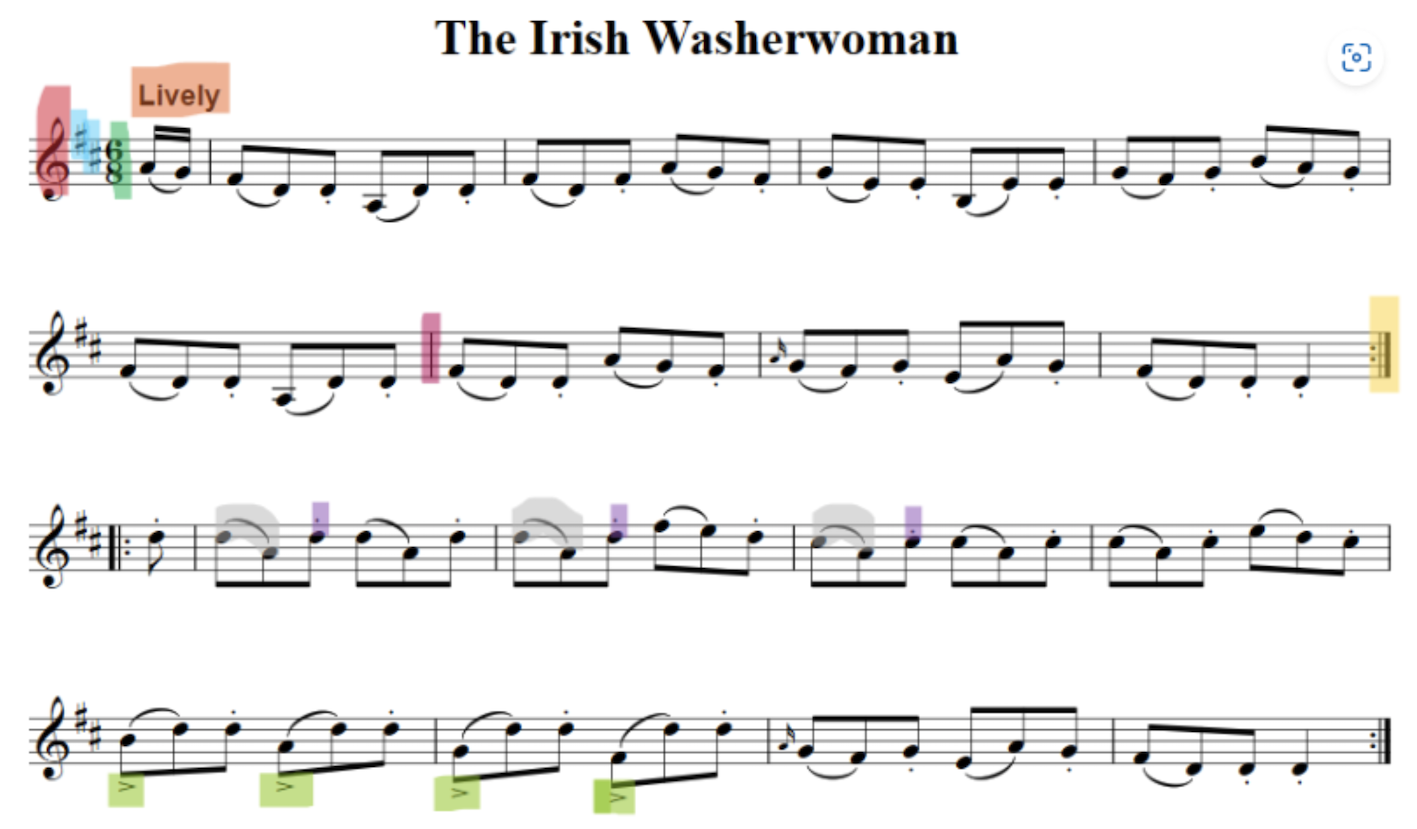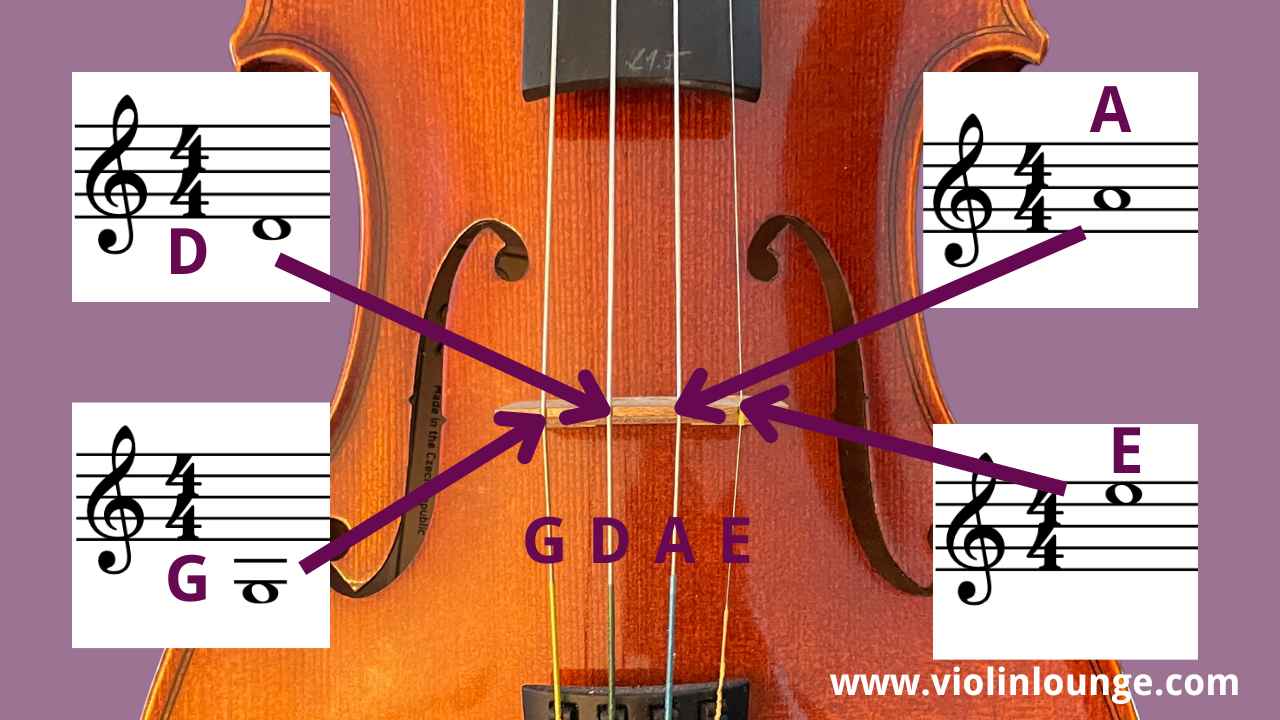
The prospect of learning music notation should not be a paralyzing fear that keeps you from following your musical dreams. By learning a few basics and practicing patience, you can learn to read music fluently while still enjoying your music-making.
The first step is making sure you understand what all the shapes and symbols on the page refer to. If the composer bothered putting it down, it’s probably important! To demonstrate this, let’s look at a simple example where I’ve highlighted all the different types of markings:

Orange: Composers often put a simple word or phrase in the top left-hand corner to describe the emotion feeling the piece should have, in this case “Lively”. Often there will also be a specific tempo marking in this corner.
Red: The treble clef sign appears at the beginning of every line of violin music. Treble clef tells you which line the note G is on. All violin music is written only in this clef (sorry violists!).
Blue: The key signature consists of either sharps or flats (never both). If the piece is in C Major or A Minor, there will be nothing marked in the key signature. Don’t worry, this will make more sense when we discuss keys and accidentals further down. Knowing your key signatures is very important for putting your fingers in the right place.
Pink: Measure lines divide music into equally-sized boxes, making it easier to read and count.
Green: The time signature shows how many beats are in each measure. The top number shows how many beats there are, and the bottom number shows what type of note (half, quarter, eighth, etc.) gets the beat. We will discuss this more in the section on rhythms. In more advanced sheet music, the time signature (and/or key signature) may change in the middle of the piece.
Yellow: A double bar line with two dots is a repeat sign, meaning to play the preceding section over again. In the second half of this piece, you can see repeat signs at the beginning of the third line and the end of the fourth line, indicating the exact section to be repeated.
Grey, Purple, Lime Green: Any other special markings you see on the page are technique markings. In this case, there are slurs, staccato marks, and accent marks. Advanced pieces, such as the Sibelius violin concerto, have tons of very specific technique marks! Always look up ones you aren’t familiar with.

Below is how the open strings sound, so you can recognize them. Always make sure your violin is tuned. You can use my free online violin tuner with microphone and tuning notes for that.